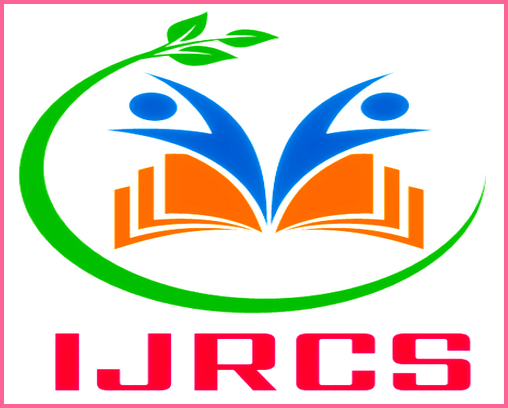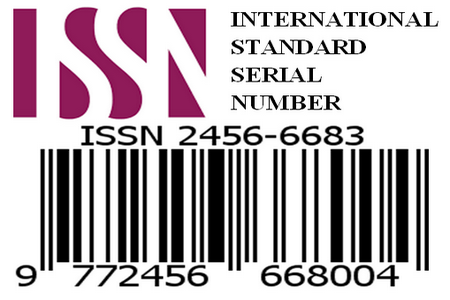Sustainable English Education: Minimizing Paper Waste Through Digital Innovation
Author(s): Dr Kirti Bala, Dr Rashmi Kaushik
Authors Affiliations:
1, 2 Assistant Professor,
1,2 Department of English, Swami Keshvanand Institute of Technology, Management & Gramothan,
Jaipur, Rajasthan, India
DOIs:10.2017/IJRCS/202503014 | Paper ID: IJRCS2025030014Digital technology integration into English language teaching (ELT) has become a game-changing strategy, providing long-term solutions that improve learning results while reducing environmental impact. This study examines how digital resources can help cut down on paper use, promote interactive learning, and match teaching methods with international sustainability projects. Conventional ELT approaches mostly use printed materials, which increases pollution, deforestation, and financial constraints, especially in environments with limited resources. Because they do not require printed materials, digital solutions like online language learning platforms, e-books, and Learning Management Systems (LMS) offer a good substitute. Additionally, by educating students about sustainability and conservation through interactive material, these resources raise environmental consciousness. Through the removal of financial and geographic constraints, digital learning solutions also improve accessibility. Multimedia resources like Quizlet and Kahoot produce captivating and immersive experiences, while platforms like Babbel and Duolingo accommodate a variety of learning requirements. However, methods that address digital fairness, teacher preparation, and sustainable technology practices are necessary for the successful deployment of digital ELT. Indian case studies, such as the Diksha Digital Learning program in Tamil Nadu and the E-Pathshala initiative in Uttar Pradesh, demonstrate how well digital solutions may raise English proficiency while promoting sustainability. To ensure long-term impact, these initiatives make use of professional development programs, offline content distribution, and energy-efficient gadgets. Digital ELT has the ability to completely transform language instruction, even in the face of obstacles like poor internet connectivity and opposition from conventional teachers. Stakeholders can use technology to make education more inclusive and ecologically conscious by emphasizing sustainability, accessibility, and ongoing assessment.
Dr Kirti Bala, Dr Rashmi Kaushik(2025); Sustainable English Education: Minimizing Paper Waste Through Digital Innovation, International Journal of Research Culture Society, ISSN(O): 2456-6683, Volume – 9, Issue – 3., Pp.116-119. Available on – https://ijrcs.org/
REFERENCES:
- OER Commons. (2021). “Open Educational Resources for Sustainable Language Learning.” Retrieved from https://www.oercommons.org.
- Diksha Platform. (2022). “Enhancing English Proficiency in Rural Areas Through Digital Tools.” Government of India. Retrieved from https://diksha.gov.in
Additional Readings:
Allen, I. E., & Seaman, J. (2017). Digital Learning Compass: Distance Education Enrollment Report 2017. Babson Survey Research Group. Retrieved from https://onlinelearningsurvey.com.
Barrot, J. S., & del Rosario, L. S. (2021). “Sustainable Digital Pedagogies: Practices and Perceptions in English Language Education.” Sustainability, 13(4), 2193. https://doi.org/10.3390/su13042193
Dudeney, G., & Hockly, N. (2016). Digital Literacies: Research and Resources in Language Education. Pearson Education.
European Commission. (2020). Digital Education Action Plan 2021-2027: Resetting Education and Training for the Digital Age. Retrieved from https://ec.europa.eu.
Gill, S., & Sharma, P. (2021). “Eco-Friendly Language Teaching: Digital Resources as a Pathway to Sustainability.” Journal of Language Teaching and Research, 12(5), 841-850. https://doi.org/10.17507/jltr.1205.10
Ministry of Education, Government of India. (2020). National Education Policy 2020. Retrieved from https://www.education.gov.in.
Sinha, R., & Kumar, V. (2020). “Innovative Digital Strategies in English Language Teaching: A Path Towards Green Education.” International Journal of Environmental and Educational Studies, 8(3), 213-228.
UNESCO. (2020). Education for Sustainable Development: A Roadmap. Paris: UNESCO. Retrieved from https://unesdoc.unesco.org.
Wilson, J., & Huang, M. (2019). “Green Classrooms: The Role of Technology in Promoting Sustainability in Language Education.” Journal of Environmental Sustainability in Education, 7(2), 122-138.
Yadav, R., & Mehta, P. (2022). “From Chalkboards to Keyboards: The Environmental Benefits of Digital Education in Rural India.” Asian Journal of Distance Education, 17(1), 34-50.




